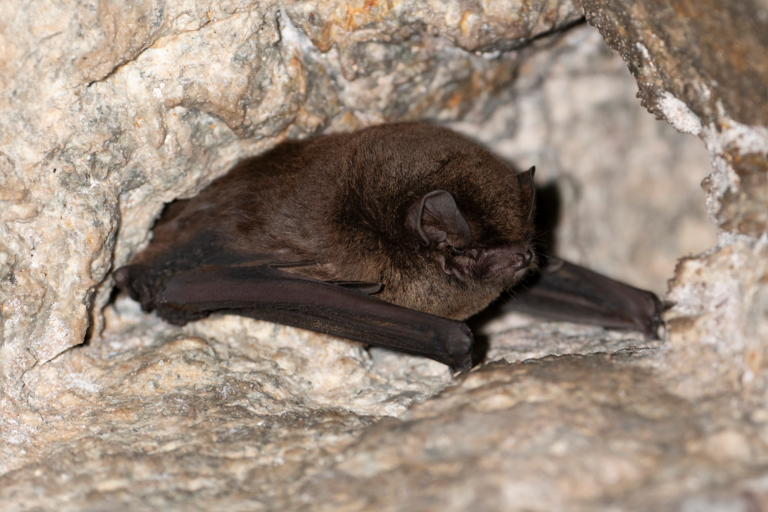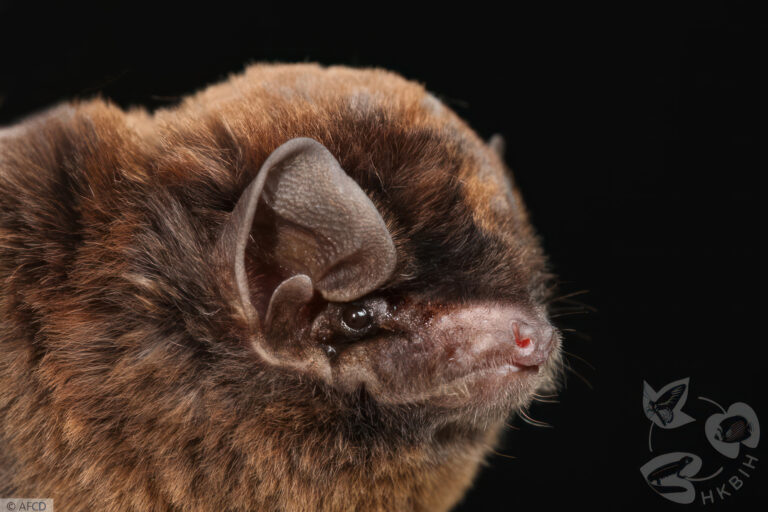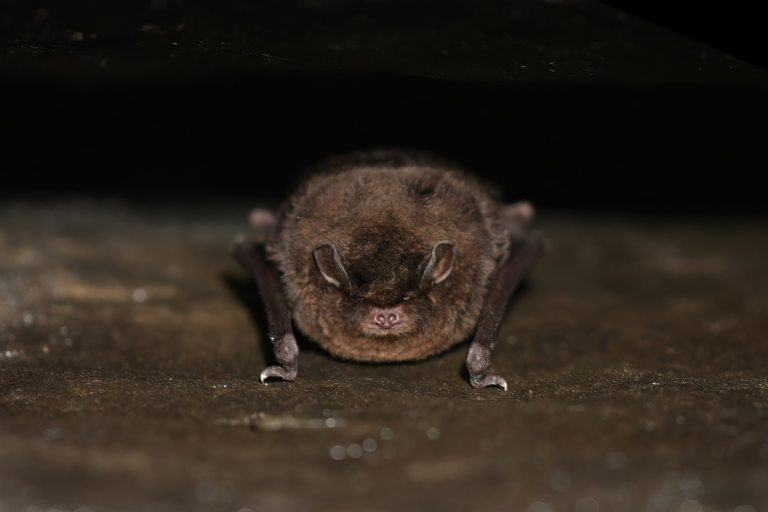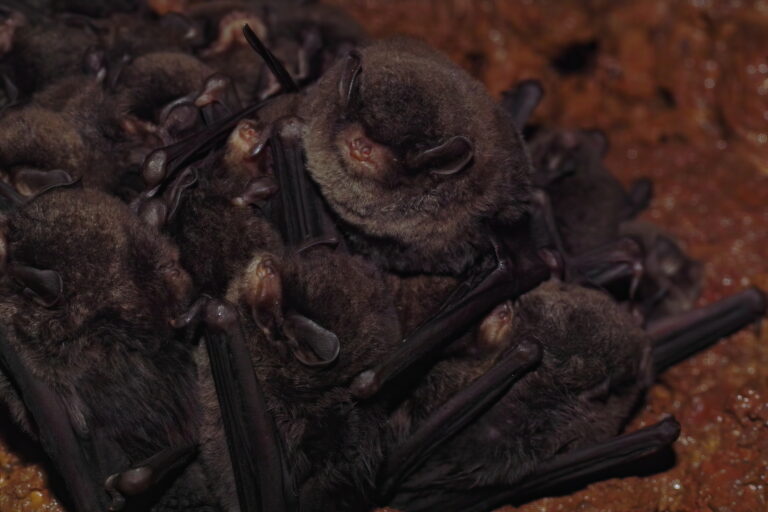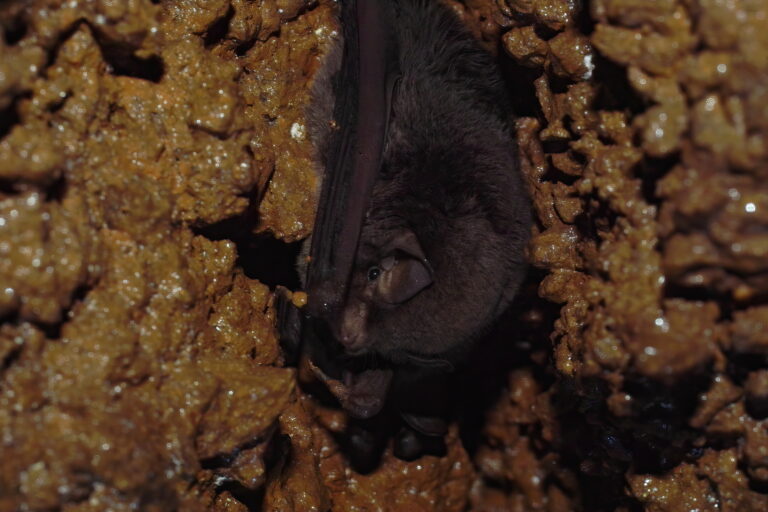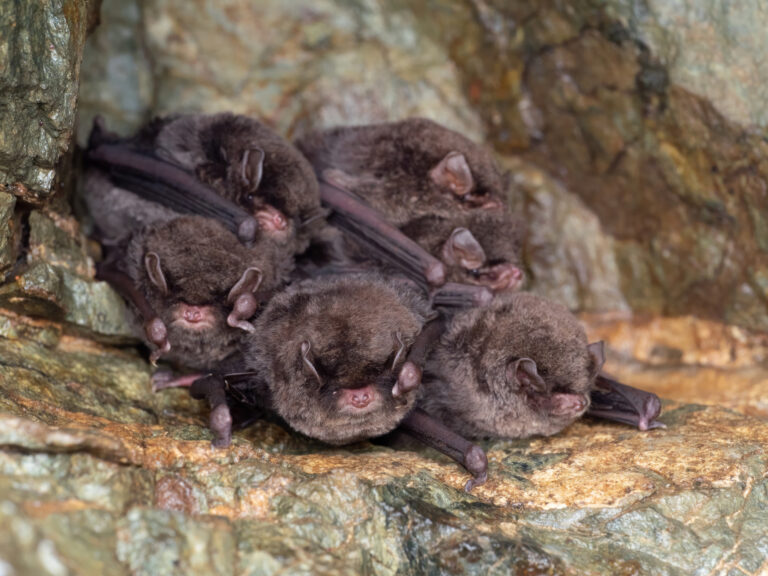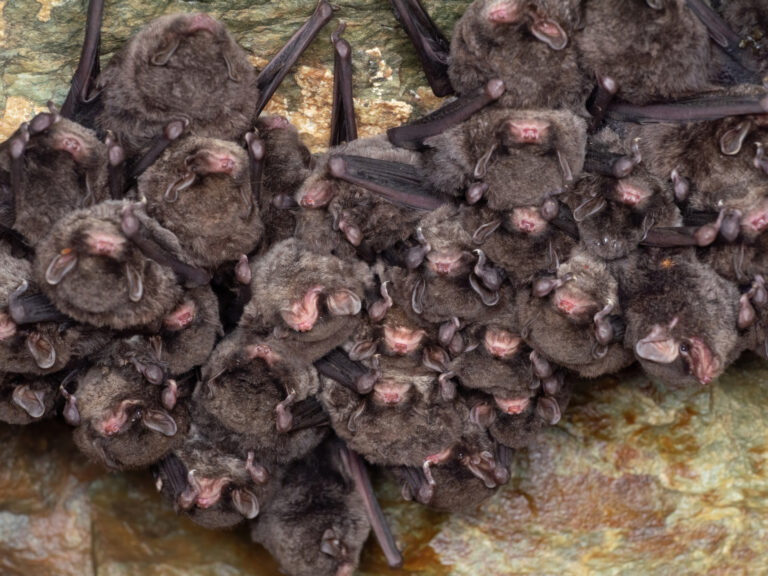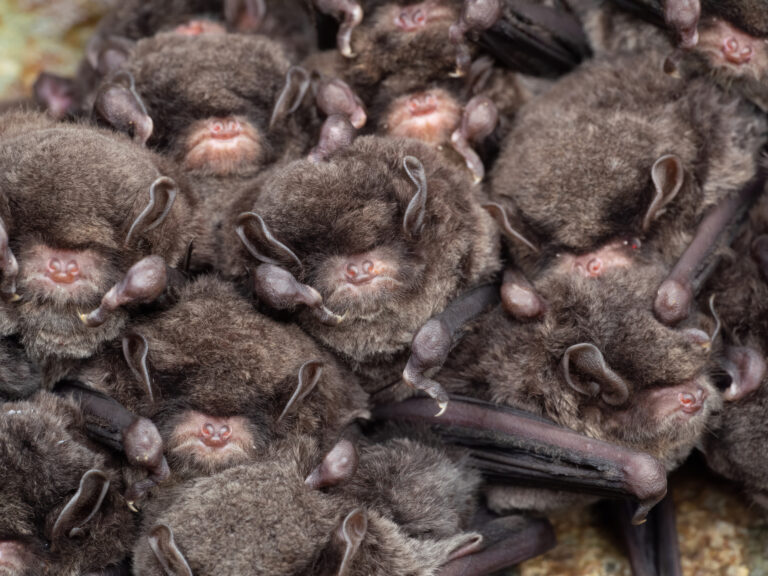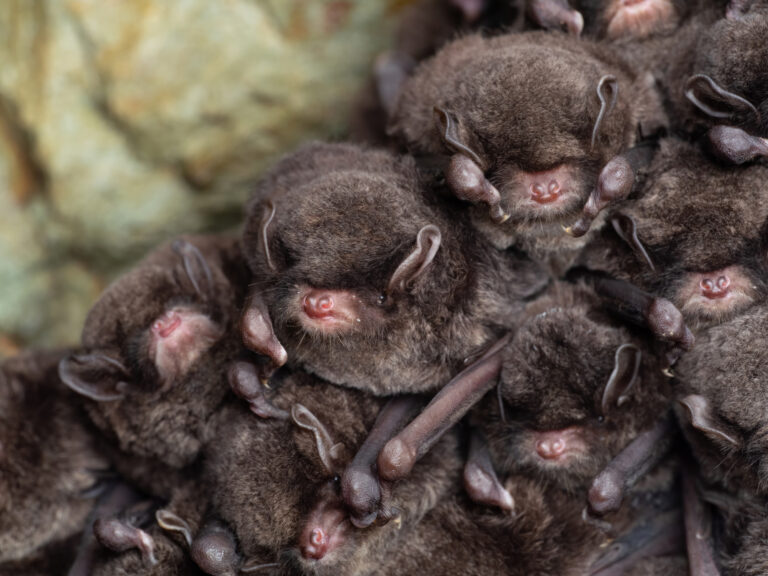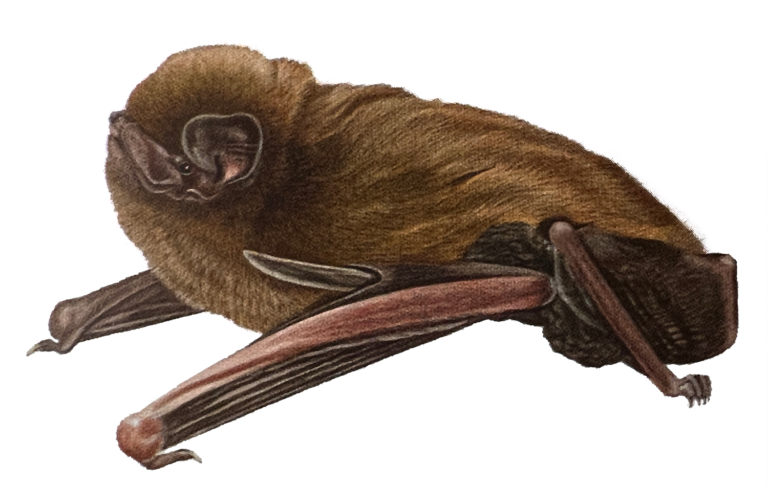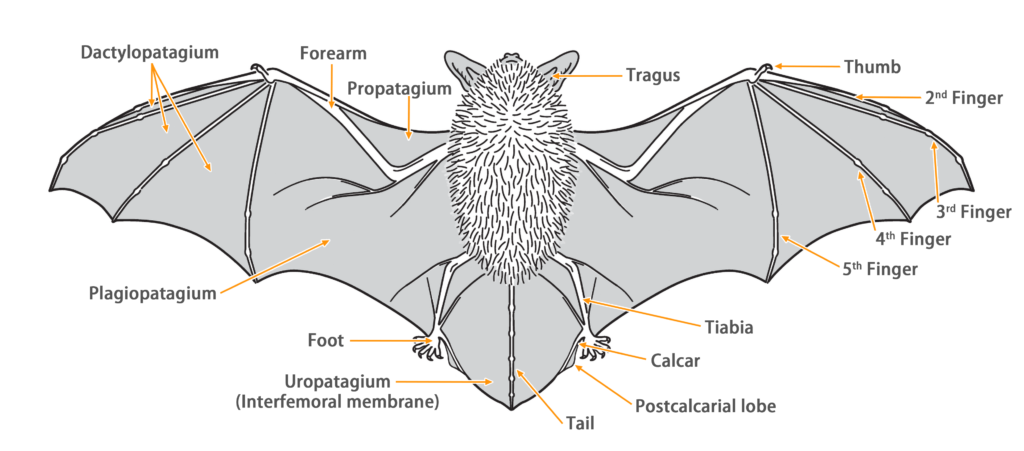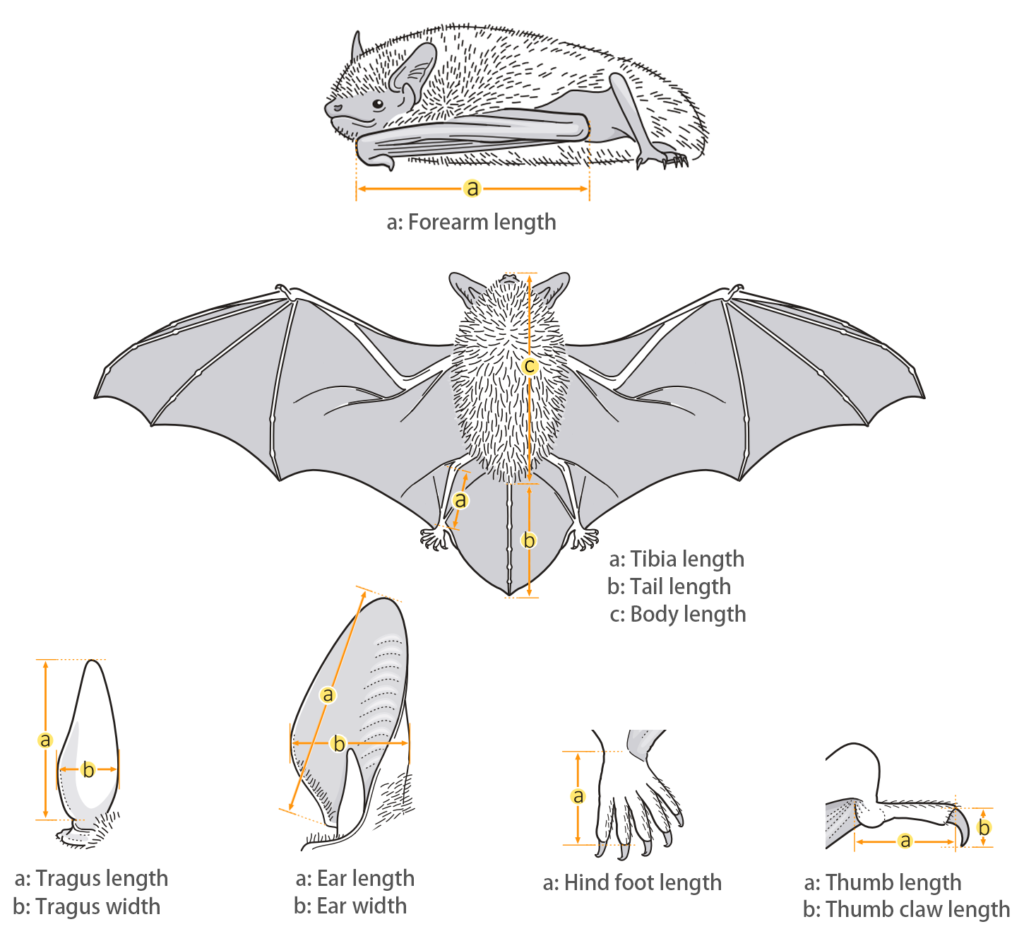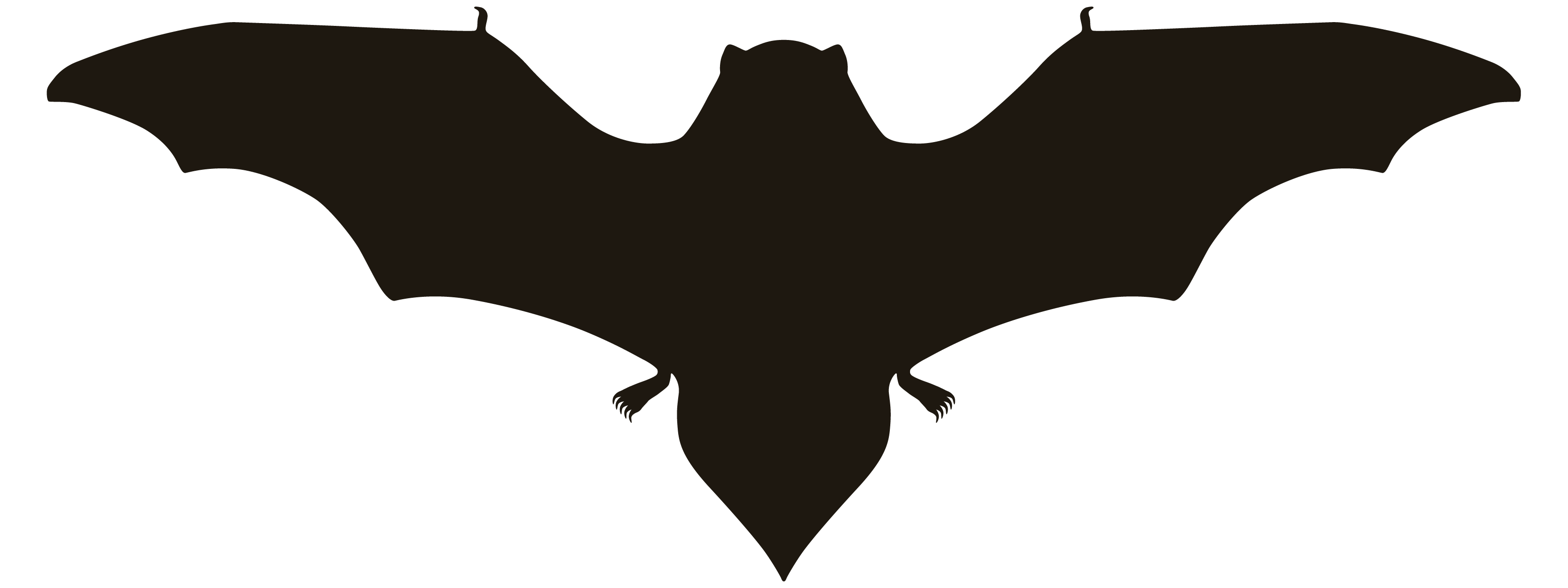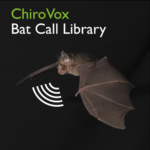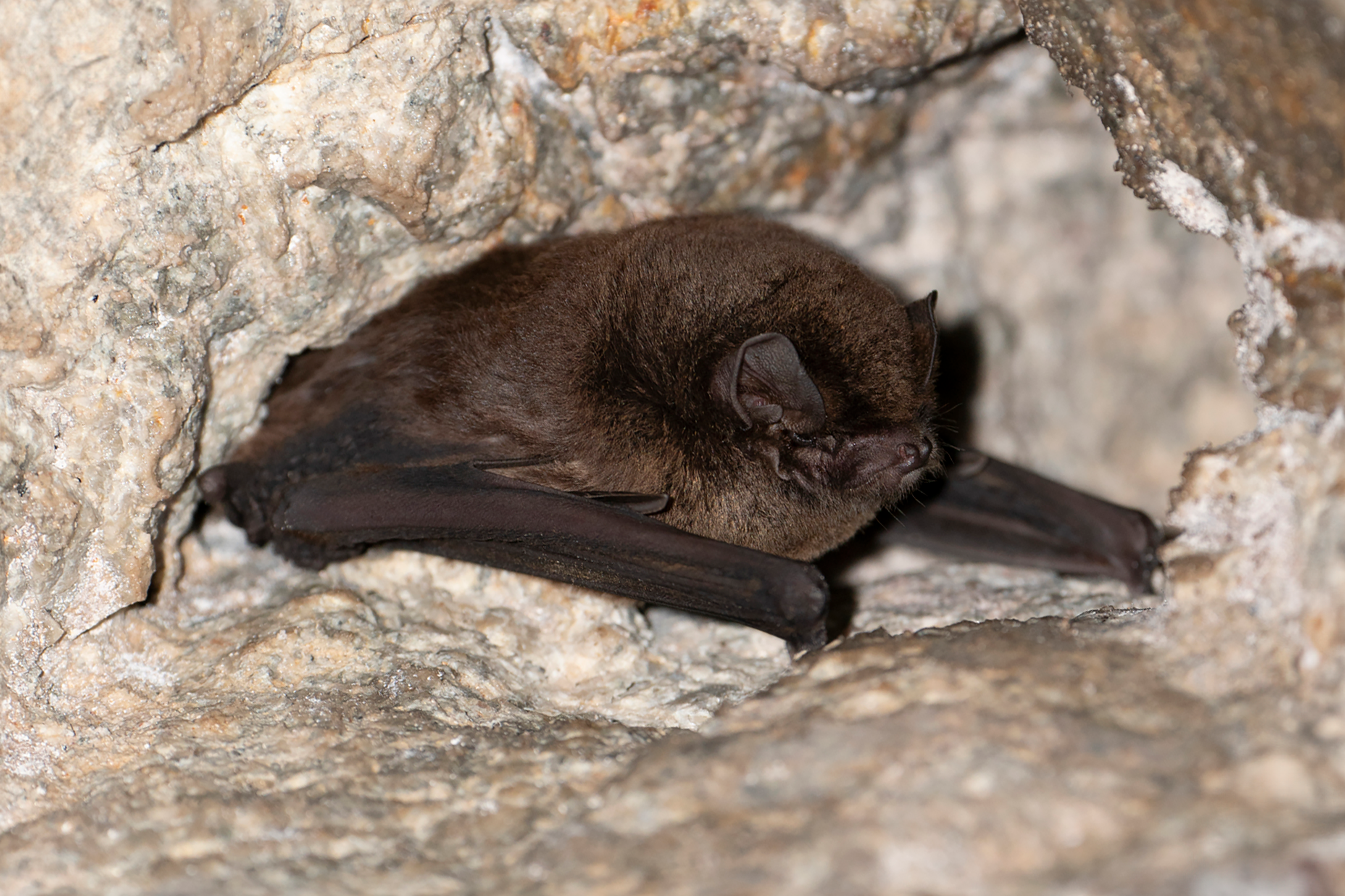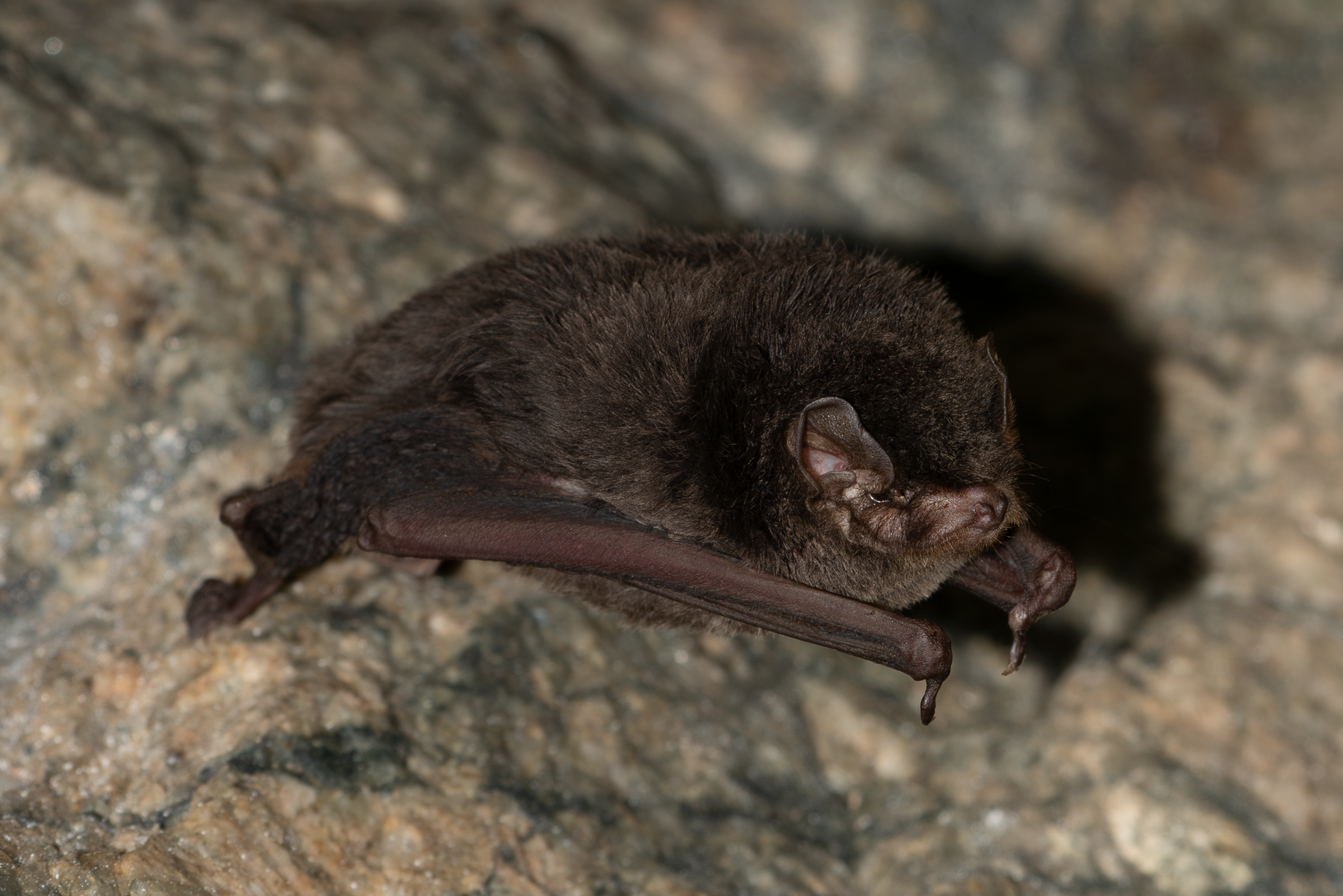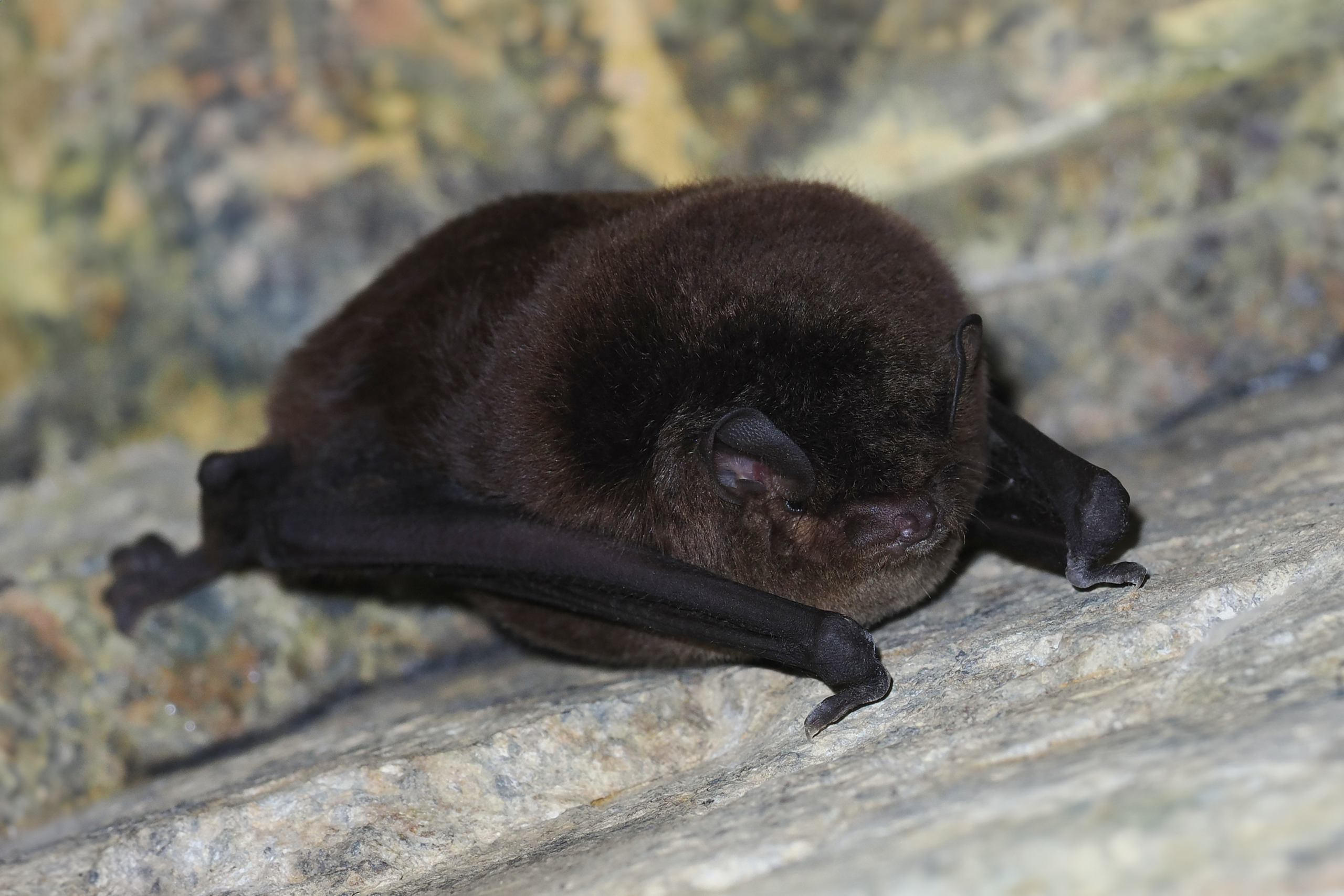- Hong Kong Bat Radar
- Asian Bent-wing Bat (Miniopterus fuliginosus)
Asian Bent-wing Bat
Miniopterus fuliginosus (Hodgson, 1835)
Taxonomy
| Family: | Miniopteridae |
| Genus: | Miniopterus |
| Scientific name: | Miniopterus fuliginosus (Hodgson, 1835) |
| Synonyms: |
M. schreibersii chinensis Thomas, 1908 M. schreibersii fuliginosus (Hodgson, 1835) M. schreibersii japoniae Thomas, 1905 M. schreibersii parvipes G.M.Allen, 1923 Vespertilio fuliginosa Hodgson, 1835 |
| Common name: | Asian Bent-winged Bat |
| Other name: | Asian Long-fingered Bat, Eastern Bent-winged Bat, Common Bent-winged Bat |
| Remark: | M. fuliginosus was initially considered a subspecies of M. schreibersii but was later elevated to the status of an independent species. |
| Characteristics | |
| Color: | The body fur is long, silky, dense, and lustrous. The dorsal fur exhibits various shades, typically appearing as uniform dark gray or dark brown (black at the base and deep gray or brown at the tip). Some individuals display fur color variations, with the head and upper body being brown and the lower body being dark gray, or partial fur whitening (such as the neck, back, and buttocks). The ventral fur is relatively lighter in color. Juvenile bats have a relatively darker overall fur color, appearing gray-black. |
| Ear: | The ear pinna is short and round, with a rounded and non-protruding ear tip that does not extend beyond the top of the head. The tragus is thumb-shaped, with a short and blunt tip that curves forward. The color of the ear pinna and tragus varies, showing substantial individual differences, ranging from uniform deep gray to a gradient of dark gray above and light white below. |
| Head: | The skull is highly elevated, and the snout is wide and short. |
| Limbs: | The wing membrane extends to the ankle. At rest, the wingtips fold outward, extending beyond the wingspan. |
| Tail: | The tail is long, completely enveloped by the interfemoral membrane. The calcar is long and unkeeled. |
| Body measurements | |
| Size: | Medium Bent-winged bat |
| Body: | 47.0 - 65.0 mm |
| Tail: | 44.0 - 61.0 mm |
| Ears: | 8.7 - 12.0 mm |
| Hind foot: | 7.0 - 12.0 mm |
| Forearm: | 44.7 - 49.6 mm |
| Weight: | 13.6 ± 1.1 g |
| Wing morphology | |
| Wing span: | 0.309 m |
| Wing area: | 0.014 m2 |
| Wing loading: | 9.85 ± 0.83 N/m2 (Mid-high) |
| Aspect ratio: | 6.94 ± 0.13 (Mid-high) |
| Tip-shape index: | - |
| Reference: | Hu et al., 2011 |
Ecology
| Habitat: | Roosting primarily in caves such as water tunnel and abandoned mine caves, usually be found in rock crevices, fissures, or drainage holes. They can also be found in drainage channels, sea caves, air-raid shelters, and stalactite caves. |
| Habit: | They exhibit a preference for roosting in groups, although solitary individuals are also observed. The size of colony can range from a few individuals to tens of thousands (such as in the case of the Ruifang Bat Cave in New Taipei City, Taiwan, which can harbor hundreds of thousands of bats in summer). Locally, its colony size is relatively smaller in scale, and the actual colony size and distribution are still in need of further research and study. When roosting in groups, individuals tightly cluster or overlap with each other, and they tend to aggregate with conspecifics. During the winter season, they disperse in a scattered manner within their habitat, roosting individually or in small groups. |
| Reproduction: | Mating occurs from September to November, while the breeding season takes place from June to July. Lactation period spans from July to August, typically with the birth of a single offspring. In breeding colonies found in Japan and Taiwan, Asian bent-winged bats gather in specific caves during the summer to form breeding and nursing colonies, with population numbers ranging from thousands to tens of thousands. Juvenile bats grow rapidly, being able to fly and wean within about 1.5 months after birth. Around 2 months after birth, they will leave the breeding site along with their mothers. |
| Hibernation: | Hibernation typically occurs from late December to February, but the exact duration varies depending on weather conditions. |
| Flight: | The wing loading and aspect ratio are considered moderate to high, suggesting fast flight speed and excellent flight efficiency but with reduced agility. They typically hunt through and between trees, encircles at medium height (about 3-5m above ground) during their flight. They may feed quite away from their roosting site. They are canopy fliers to catch the insects but adopt low flight above the stream and water surfaces. |
| Migration: | They possess a slender and elongated wing shape, with a relatively high wingspan. This wing morphology grants them excellent flight efficiency and long-distance migration capabilities. In Taiwan, an individual has been recorded migrating from Ren'ai Cave in Nantou to the bat cave in Ruifang District, New Taipei City, covering a distance of approximately 150 kilometers. In Japan, breeding colonies in sea caves in Wakayama Prefecture have been documented to migrate distances of up to 208 kilometers. However, the migration behavior of local populations is still a subject that requires further research. |
| Foraging: | They typically leave their roosting site after sunset. They have a habit of foraging in open airspace, typically at a height of 9 to 12 meters above grasslands, forests, or open bodies of water. While foraging, they engage in medium to high-speed flight. Occasionally, they may also fly closer to the ground, streams, or rivers to search for food. |
| Diet: | As insectivorous bats, they primarily feed on insects by aerial feeding. Due to their fast flight speed and reduced agility compared to bats with lower wing loading, they are unable to employ a sweeping motion to capture a large number of small insects from the orders Diptera and Lepidoptera. Instead, they tend to prefer larger insects from the order Coleoptera and order Lepidoptera, which provide higher energy intake. They are insectivorous bats and primarily feed on insects using aerial feeding. Due to their fast flight speed and limited agility, they cannot employ the sweeping net-like feeding strategy used by bats with low wing-loading to capture a large number of small insects from the orders Diptera or Lepidoptera. Instead, they tend to prefer prey from larger insect orders, such as beetles (e.g., Anomala spp.) and Lepidoptera, which provide higher energy content. If their foraging area includes freshwater bodies, they may also feed on smaller aquatic insects from orders such as Diptera (such as crane flies, Tipulidae), Coleoptera, Trichoptera, and Odonata. |
Diet composition of M. fuliginosus in China (Guizhou) (Hu et al., 2011)
Diet composition of M. fuliginosus in Japan (Kagoshima) (Funakoshi & Takeda, 1998)
Distribution
| Local: | The New Territories, Hong Kong Island and Lantau Island |
| Global: | Northeast Afghanistan, North Pakistan, Northwest, North, Northeast & South India, Nepal, Sri Lanka, North Myanmar, North Vietnam, South, Southeast & East China, Taiwan, Korean Peninsula, extreme South Russian Far East, and Japan (except Hokkaido); it may occur in Bhutan and Bangladesh. (Ibáñez & Juste, 2019) |
Local distribution map

Global distribution map
(Ibáñez & Juste, 2019)
Status and Conservation
| First record: | 1964 |
| Origin: | Native |
| Local status: | Further research is needed |
| National status: | Least concern (Red List of China Vertebrates) |
| Global status: | Not evaluated (IUCN Red List) |
| Potential threat: | TBC |
Echolocation
| Parameter | Value |
|---|---|
| Call structure | FM-QCF |
| Duration | 1.45 ± 0.06 ms |
| Inter pulse interval | 63.08 ± 21.55 ms |
| Peak frequency | 44.50 ± 2.26 kHz |
| Start frequency | 76.04 ± 2.82 kHz |
| End frequency | 36.99 ± 0.57 kHz |
|
Region: |
China (Guizhou) |
| Method: | Hand release |
| Reference: | Hu et al., 2011 |
| Parameter | Value |
|---|---|
| Call structure | FM-QCF |
| Duration | 3.49 ± 0.84 ms |
| Bandwidth | - kHz |
| Peak frequency | 49.25 ± 3.10 kHz |
| Start frequency | 78.54 ± 7.31 kHz |
| End frequency | 41.06 ± 2.24 kHz |
|
Region: |
China (Hainan Island & Shanxi) |
| Method: | Flight tent |
| Reference: | Wu et al., 2019 |
| Parameter | Value |
|---|---|
| Call structure | FM |
| Duration | 8.9 ± 0.85 ms |
| Inter pulse interval | - ms |
| Peak frequency | 48.3 ± 0.80 kHz |
| Start frequency | - kHz |
| End frequency | 47.1 ± 0.62 kHz |
|
Region: |
Japan (Kyushu) |
| Method: | Wild Call |
| Reference: | Funakoshi et al., 2010 |
| Parameter | Value |
|---|---|
| Call structure | FM-QCF |
| Duration | 3.62 ± 2.06 ms |
| Bandwidth | 15.42 ± 11.79 kHz |
| Peak frequency | - kHz |
| Highest frequency | 65.12 ± 12.24 kHz |
| Lowest frequency | 49.71 ± 1.48 kHz |
|
Region: |
Taiwan (Kenting Guanshan) |
| Method: | Hand release / Wild call |
| Reference: | Chao, 2001 |
| Parameter | Value |
|---|---|
| Call structure | FM-QCF |
| Duration | 4.03 ± 1.30 ms |
| Bandwidth | 6.34 ± 3.58 kHz |
| Peak frequency | - kHz |
| Highest frequency | 62.34 ± 7.30 kHz |
| Lowest frequency | 48.95 ± 1.98 kHz |
|
Region: |
Taiwan (Kaohsiung) |
| Method: | Hand release / Wild call |
| Reference: | Chao, 2001 |
| Parameter | Value |
|---|---|
| Call structure | FM-QCF |
| Duration | - ms |
| Inter pulse interval | - ms |
| Peak frequency | - kHz |
| Highest frequency | - kHz |
| Lowest frequency | - kHz |
|
Region: |
Hong Kong |
| Method: | Hand release |
| Reference: | tbc |
Similar Species
Asian Bent-winged Bat
Miniopterus fuliginosus
Size:
Medium size (overlapping with M. magnater )
Forearm:
44.7 - 49.6 mm
Color:
Varied from dark brown to dark gray.
Pinna:
Varied from uniform dark brown to dark gray; may exhibit a gradient from darker to lighter shades.
Tragus:
More pronounced curvature; generally evenly colored in dark brown or dark gray.
Echolocation:
Higher frequency than M. magnater.
Greater Bent-winged Bat
Miniopterus magnater
Size:
The largest size (overlapping with M. fuliginosus )
Forearm:
48.0 - 54.0 mm
Color:
Varied from dark brown to dark gray.
Pinna:
Varied from uniform dark brown to dark gray; may exhibit a gradient from darker to lighter shades.
Tragus:
More pronounced curvature; generally evenly colored in dark brown or dark gray; may exhibit a gradient from darker to lighter shades.
Echolocation:
Lower frequency than M. fuliginosus.
Lesser Bent-winged Bat
Miniopterus pusillus
Size:
The smallest size
Forearm:
36.5 - 44.3 mm
Color:
Varied from dark brown to dark gray.
Pinna:
Varied from uniform dark brown to dark gray; may exhibit a gradient from darker to lighter shades.
Tragus:
Relatively subtle curvature; generally evenly colored in dark brown or dark gray; may exhibit a gradient from darker to lighter shades and even appear uniformly pale white.
Echolocation:
Higher frequency than the others.
Bibliography
Accharya, P. R., Adhikari, H., Dahal, S., Thapa, A., & Thapa, S. (2012). Bats of Nepal, A field guide. Small Mammals Conservation and Research Foundation.
Chao, N. M. (2001). Identification of Pipistrellus abramus, Miniopterus schreibersii, Hipposideros terasensis, and Rhinolophus monoceros using echolocation call characters. [Master’s thesis, National Sun Yat Sen University].
Cheng, H. C., Fang, Y. P., & Chou, C. H . (2015 ). A photographic guide to the bats of Taiwan (2 nd ed.) Jiji: Endemic Species Research Institute Taiwan ROC.
Funakoshi, K. (1986). Maternal care and postnatal development in the Japanese long-fingered bat, Miniopterus schreibersi fuliginosus. Journal of the Mammalogical Society of Japan, 11(1/2), 15-26.
Funakoshi, K., & Takeda, Y. (1998). Food habits of sympatric insectivorous bats in southern Kyushu, Japan. Mammal Study, 23(1), 49-62.
Funakoshi, K. (2010). Acoustic identification of thirteen insectivorous bat species from the Kyushu District, Japan. Mammalian Science, 50(2), 165-175.
Hu, K. L., Wei, L., Zhu, T. T., Wang, X. Z., & Zhang, L. B. (2011). Dietary composition, echolocation pulses and morphological measurements of the long-fingered bat Miniopterus fuliginosus (Chiroptera: Vespertilioninae). Zoological Research, 32(2), 163-167.
Ibáñez, C., & Juste, J. (2019). Miniopteridae. In Mittermeier, R. A., & Wilson, D. E. (Eds.), Handbook of the Mammals of the World – Volume 9 Bats. (pp. 674-709). Lynx Edicions.
Iida, K., Kobayashi, R., Hengjan, Y., Nagata, N., Yonemitsu, K., Nunome, M., Kuwata, R., Suzuki, K., Ichiyanagi, K., Maeda, K., Ohmori, Y., & Hondo, E. (2017). The genetic diversity of D-loop sequences in eastern bent-winged bats (Miniopterus fuliginosus) living in Wakayama Prefecture, Japan. Journal of Veterinary Medical Science, 79(6), 1142-1145.
Jiang, Z. G., Jiang, J. P., Wang, Y. Z., Zhang, E., Zhang, Y. Y., Li, L. L., Xie, F., Cai, B., Cao, L., Zheng, G. M., Dong, L., Zhang, Z. W., Ding, P., Luo, Z. H., Ding, C. Q., Ma, Z. J., Tang, S. H., Cao, W. X., Li, C. W., Hu, H. J., Ma, Y., Wu, Y., Wang, Y. X., Zhou, K. Y., Liu, S. Y., Chen, Y. Y., Li, J. T., Feng, Z. J., Wang, Y., Wang, B., Li, C., Song, X. L., Cai, L., Zang, C. X., Zeng, Y., Meng, Z. B., Fang, H. X., & Ping, X. G. (2016). Red List of China’s Vertebrates. Biodiversity Science 24(5), 500‑551.
Morii, R. (1971). Partial albinism of Miniopterus schreibersi fliginosus from Yashima-dokutsu Cave, Kagawa Pref. Shikoku, Japan. The Journal of the Mammalogical Society of Japan, 5(4), 151-152.
Shek, C. T. (2006). A Field Guide to the Terrestrial Mammals of Hong Kong. Friends of country park and cosmos book limited.
Shek, C. T., & Chan, C. S. M. (2005). Roost Censuses of Cave Dwelling Bats of Hong Kong. Hong Kong Biodiversity, 10, 1-8.
Thong, V. D., Denzinger, A., Sang, N. V., Huyen, N. T. T., Thanh, H. T., Loi, D. N., Nha, P. V., Viet, N. V., Tien, P. D., Tuanmu, M.-N., Huang, J. C.-C., Thongphachanh, L., Luong, N. T.,& Schnitzler, H. U. (2021) Bat Diversity in Cat Ba Biosphere Reserve, Northeastern Vietnam, A Review with New Records from Mangrove Ecosystem. Diversity, 13(8), 376.
Wu, H., Jiang, T., Liu, S., Lu, G., & Feng, J. (2020). Acoustic identification of two morphologically similar bat species, Miniopterus magnater and Miniopterus fuliginosus (Chiroptera, Miniopteridae). Mammalia, 84(2), 201-206.
Xu, H. (2005). Migration of young Bent-winged bats, Miniopterus fuliginosus born in Shirahama, Wakayama Prefecture (1) Records from the years 2003 and 2004. Bulletin of Center for Natural Environment Education, Nara University of Education, 7, 31.
Hong Kong Bat Radar. (18/05/2025). A Field Guide to Bats of Hong Kong: Asian Bent-wing Bat (Miniopterus fuliginosus ). https://hkbatradar.com/en/miniopterus_fuliginosus
# Due to the striking resemblance and overlapping body sizes of M. fuliginosus and M. magnater, species identification based solely on visual observation and measurements is challenging. As a result, the existing local literature, including information on population numbers, distribution, and diet, may not be entirely accurate. However, this website will still provide this information as a point of reference.
